Top 50 Lost Treasures And Artifacts Steeped In Legend
From the legendary sword of Excalibur, to a room full of gold that was estimated to be worth close to $300 million, we look at the top 50 lost treasures and artifacts steeped in legend.
50 - Thomas Beale’s Ciphers

This set of three cipher-texts, commonly known as The Beale ciphers, allegedly states the location of a buried treasure of gold, silver and jewels estimated to be worth over $43 million.
Consisting of three different ciphers, two have remained unsolved over the years, while the third cipher has been solved and reveals the contents of the treasure.
Weighing about three tons, includes approximately 35,052 troy oz gold, 61,200 troy oz silver, worth about $43 million and jewels worth close to $220,000 in today's money.
The other two ciphers, one of which supposedly reveals the exact location of the buried treasure has not been solved.
Many expeditions have searched for the hidden vault, with some suggesting that the treasure may be hidden in a mansion.
Can you solve parts one and three of Beale's codes? Comment below if you have an idea!
49 - Ark of the Covenant

Thought to contain tablets engraved with the 10 Commandments, you may recognize this gold-plated chest from a very famous Hollywood Film.
Kept in a temple, named the First Temple in Jerusalem, it was thought destroyed in 587 B.C. when an army from ancient Babylon, led by King Nebuchadnezzar II, conquered the city.
While the remains of the Ark have been lost to history, some still believe that it may be buried at the bottom of the ocean, or be hidden away in a private vault.
48 - The Sword of Excalibur

Despite the claims made by some who believe they have recovered Excalibur, this legendary sword of Myth, remains, just that.
Said to be the sword of King Arthur that is supposed to possess magical powers or be associated with the rightful sovereignty of Britain, the sword has never been found or even proven to be real.
Said to have been given to Arthur by the lady of the lake, the sword was purported to have been buried with him at his grave in Glastonbury Abbey and later found in 1191.
King Richard I of England is then said to have been gifted the sword and later passed it to Tancred of Sicily, before it disappear's from the history books.
47 - Romanov Faberge Eggs
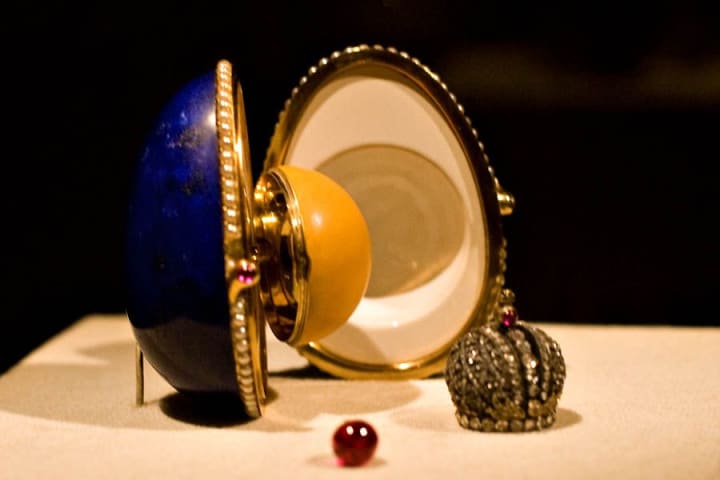
While the sword of Excalibur lives in myth and legend, two of history's most famous Faberge Eggs most certainly don't and did, at some point, really exist.
In total, 50 Imperial Easter eggs were created for the Russian Imperial family between 1885 to 1916 and most can still be found in private collections to this day.
Eight remain missing, however, and two of these include the famed Hen with Sapphire Pendant and the Alexander III Commemorative egg.
The last known location of the Alexander Egg, was in 1909 when Nicholas II of Russia presented it to his mother.
The Sapphire Pendant, also known as the Egg with Hen in Basket, was last seen in the Armory Palace of the Kremlin in 1922, however the exact design is unknown to this day.
46 - Sappho's Poem's

Known as the Shakespeare of the seventh century B.C, Greek lyric poet Sappho created many poems, yet only a few survive intact to this day.
Two never-before seen sections of Sappho poems were recovered in 2014 and revealed details about her brothers and love life.
Much of her works were lost with the church seeing her lifestyle as immoral, and today, out of 10,000 lines of poetry, just 650 still exist.
45 - The Round Table
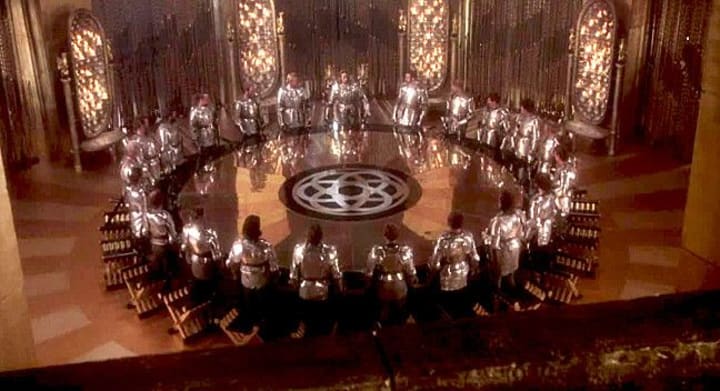
Much like the legendary Sword of Excalibur, The Round Table was said to have existed during the time of King Arthur.
The table was said to host various meetings of the King and his Knights, and was created to prevent quarrels among his barons and make everyone feel equal at the meetings.
In 2011, Archaeologists searching for the table made a suprising discovery at King's Knot in Stirling, where a raised circular feature was discovered.
The original round table has never been discovered and may long be lost to history, especially if it was made from wood.
44 - Florentine Diamond

The origins of our next item are said to be highly disputed and was said to have been cut for Charles the Bold, Duke of Burgundy.
This lost diamond of Indian origin, is light yellow in colour with very slight green overtones and was a nine-sided 126-facet double rose cut with a weight of 137.27 carats.
The stone has had many nicknames over the years including the Tuscan, the Tuscany Diamond, the Grand Duke of Tuscany, the Austrian Diamond, Austrian Yellow Diamond, and the Dufner Diamond.
After the fall of the Austrian Empire after World War I, the stone by order of Emperor Charles I of Austria was removed from the Imperial Treasury and taken with him into exile.
It was later stolen, sometime after 1918 and taken to South America, later thought to have been moved to the United States in the 1920's.
43 - Heirloom Seal of the Realm

Also known in English as the Imperial Seal of China, this jade-crafted seal was thought to have been was created in 221 BC.
Passing through seven dynasty's, the seal was eventually lost in the Five Dynasties and Ten Kingdoms period with its fate unknown.
Many seals have since been found but any claiming to be the fabled Heirloom Seal of the Realm have since been ruled out under closer examination.
42 - Michelangelo's Mask of a Faun
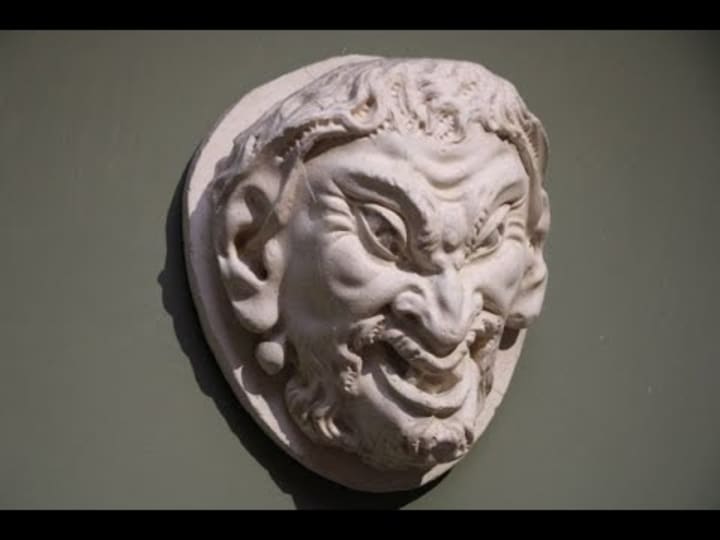
Many great works from legendary Italian renaissance artist Michelangelo still hang in museums around the world today, but one well known piece is missing from those collections.
"The Mask of a Faun," also sometimes called "The Head of a Faun," disappeared sometime in 1944 during WW2 and, although there is disagreement, its thought to have been stolen by Nazi Germany.
There is also disagreement as to whether the real painting was stolen from the Bargello National Museum in Florence.
Could the painting still be unearthed in the future? Only time will tell.
41 - Treasure of the Inca's

Also known as the Treasure of the Llanganatis, the Lost Treasure of the Inca's, is supposedly hidden deep within a mountain range in Ecuador.
Consisting of a huge amount of gold, silver, platinum and electrum artifacts, its rumored to have been hidden within the mountains after a general learned of the Inca King's murder.
The treasure has been Partially Confirmed to have existed and while the general never revealed the location of its existence, many are continuing to search for it to this day.
40 - Joyeuse
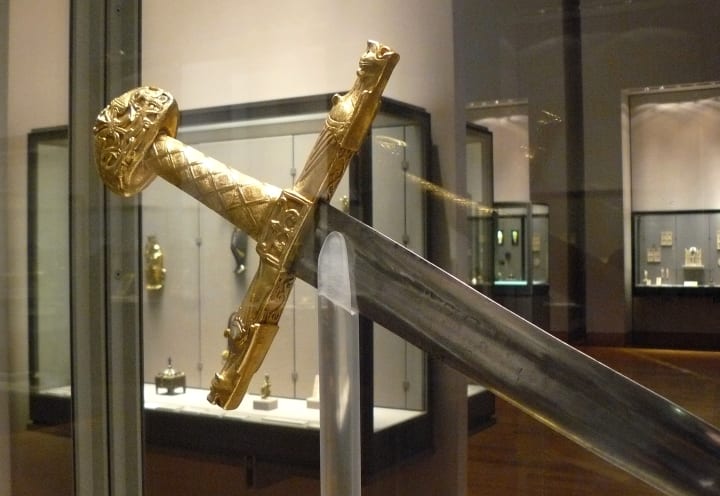
Written in medieval legend, this sword was said to have been wielded by Charlemagne, King of the Franks as his personal weapon.
Used in French royal coronation ceremonies since the 13th century, the sword is said to be housed at Louvre but it is currently unknown if this is the real artifact.
Said to contain the Lance of Longinus, or as it is more well-known, the Holy Lance, the sword is said to date from the 10th Century.
Said to have been lost in battle, the sword was reportedly found by one of the knights of Charlemagne.
39 - The Knights Templar Treasure
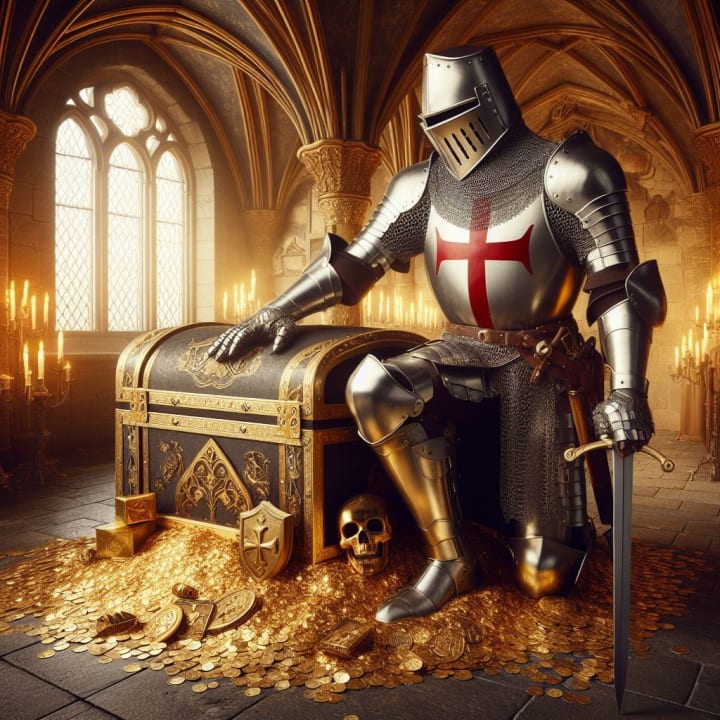
One of the oldest and most famous religious military orders in Europe, The Knights Templar was founded in 1119.
After amassing a great fortune through various activities, the templar's authority was challenged by Philip IV and the pope, having many of the arrested in 1307.
After smashing open their treasury, Philip expected to find gold treasures, Biblical images and ornate vessels.
Instead they found nothing, with the room being completely empty, and today, the location of the treasure, said to be almost 18 galleon's worth, is still hidden.
38 - Peking Man

Some of the first ancient human remains discovered in mainland Asia, this artifact disappeared during WW2 and was described as the worst disaster in the history of archaeology.
Recent findings suggest the fossils may be buried beneath a parking lot in China, although the skull has never been recovered.
37 - Genoa Chalice
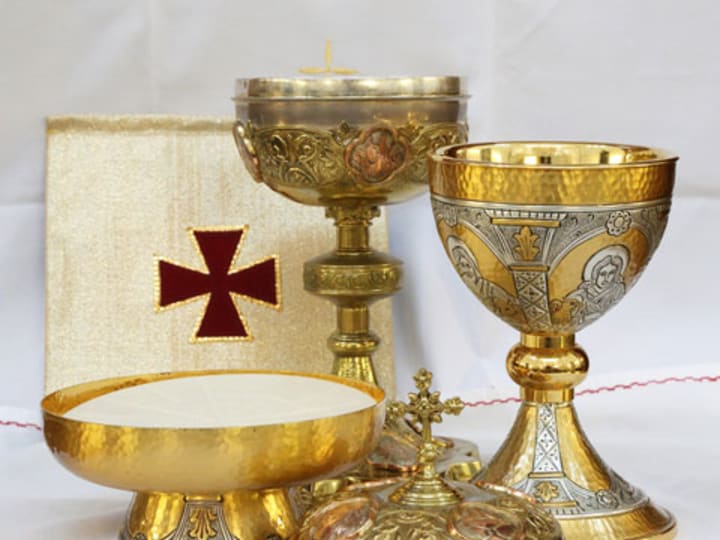
One of the most famous items of legend on this list, The Genoa Chalice is more commonly referred to as The Holy Grail.
Thought to be the cup from which Jesus drank from at the last supper, many have tried and failed to hunt down the grail.
One artifact, the Valencia Chalice is claimed to be the actual Holy Grail and sits in the Cathedral of Valencia, although is has never been accredited with supernatural powers.
The Genoa Chalice, is a hexagonal dish of the Roman era made of green Egyptian glass and is kept in Genoa Cathedral.
Many other cups, goblets and Chalices claim to be the original holy grail, yet none have ever been proven to be so.
36 - Crown Jewels of Ireland
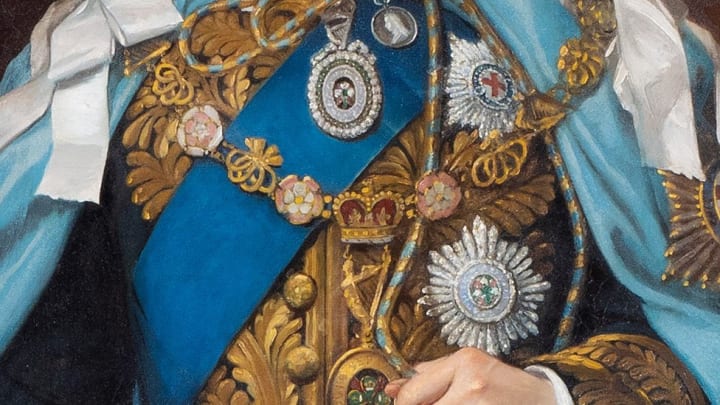
Created in 1831 for the Grand Master of the Order of St Patrick, the Crown Jewels of Ireland were stolen from Dublin Castle in 1907.
Originally kept in a library under very poor security, the Jewels were meant to be housed in a new strong room which had been built within the castle.
The safe for the jewels was too big for the door and, thus the jewels were instead kept within the safe and stored in Sir Arthur Vicars Library.
Last worn by the Lord Lieutenant, Earl of Aberdeen, on 15th March 1907, they were found to be missing on 6th July 1907, four days before a visit by King Edward VII and Queen Alexandra.
The hunt for the jewels has continued ever since, including the removal of the walls and floorboards inside the clock tower of the original Genealogical Office, but they remain missing.
35 - Jewels of King John
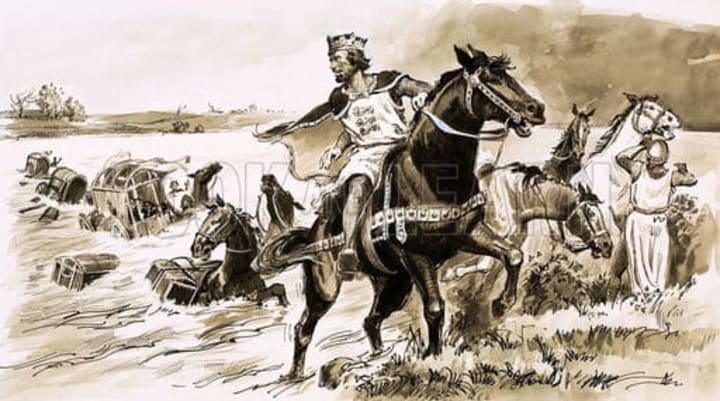
Thought to have an immeasurable collection of jewelry and gold plates, King John of England was travelling through an area of Norfolk known as "The Swamp" due to its dangerous areas.
After contracting dysentery, he decided to return to Newark Castle early and left his personal belongings, including the treasure, to take the slower route through the swamps.
Legend has it that the carriage containing the gold disappeared in the swamp, yet many believe that the kings treasure was actually stolen by his own men.
King John could not be saved from his own fate either and died days after the treasure disappeared, never to be found to this day.
34 - Lost Raphael Painting
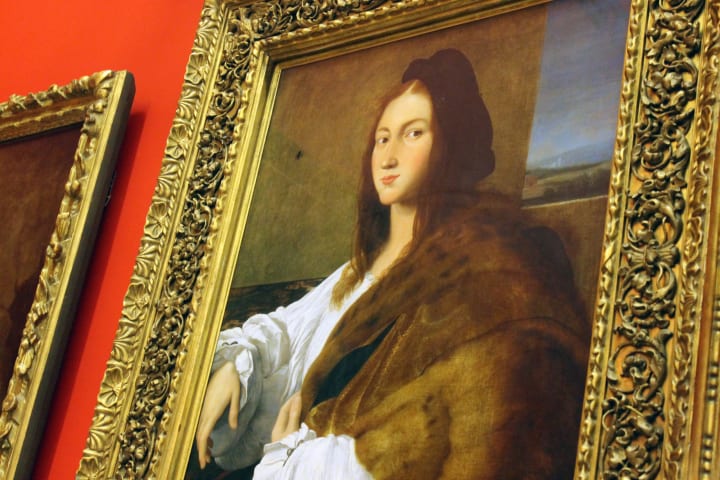
Stolen from Krakow by Nazi Germany, "Portrait of a Young Man." was created by Italian painter Raphael Sanzio.
Thought to have a destination in the un-built ‘Führermuseum’ in Linz, this painting was last seen in Hans Frank's chalet in Neuhaus, Germany, sometime in 1945.
With the trials of Germans connected with the thefts resulting in war crime charges and later executions, any knowledge of the painting has now been lost to history.
33 - The Amber Room

Nicknamed "The Eighth Wonder of the World", the jewel-studded Amber Room was crafted from six-tonnes of amber and was mounted on gold-leaf walls.
Adorned with mosaics and mirrors, the room was originally designed in the early 18th Century as an opulent chamber for Frederick I, the King of Prussia.
Later gifted to the Russian Tsar Peter the Great in 1716, the whole room was moved Catherine Palace near St Petersburg and expanded to help match the rooms of the palace.
The room was moved again in 1941 when Nazi Germany invated the Soviet Union and most, if not all of the room was transferred to Königsberg castle.
From here, its ware bouts are unknown, with the castle being razed to the ground in 1959, so far no remnants of the amber room have been discovered.
32 - Gardner Museum Artworks
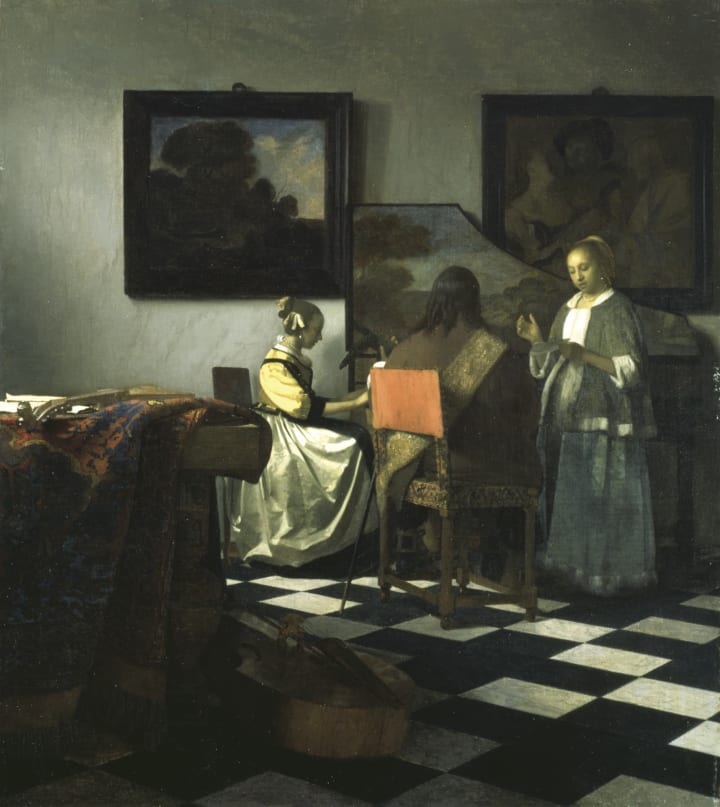
Consisting of 13 works of art worth roughly $500 million, works by the Dutch painter Rembrandt and five by French artist Edgar Degas were stolen In March 1990.
The thieves, who were dressed as police officers, were never caught and the artworks remain missing to this day.
Only the empty frames were left in the museum, located in Boston, Massachusetts and the robbery became known as the world's biggest art heist.
Many films and documentary's have been made about the heist over the years including "This Is a Robbery", filmed in 2021.
31 - Dead Bishop's Treasure

Thought to have been plundered by the bishop of Lisbon, this treasure is thought to have included gold, silver, rings, tapestries, jewels, fine plates and even portable altars.
The bishop had recently died when a ship carrying the loot from Lisbon in Portugal to Avignon in France, was attacked by two heavily armed pirate vessels while sailing near the town of Cartagena.
One ship was later captured after it ran aground, however the second ship, and possibly the one carrying the majority of the treasure is said to have escaped.
What happened to Thibaud Castillon's treasure to this day, remains a mystery.
30 - Caravaggio's Nativity
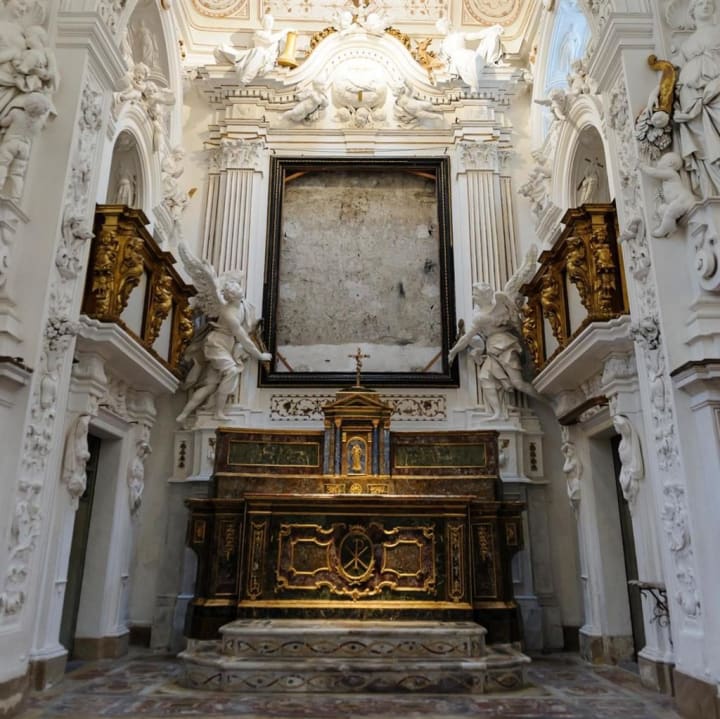
One of the most famous painting's never found, Caravaggio's Nativity depicts the birth of Christ by Italian painter Michelangelo Caravaggio.
Said to have captured the poverty of Jesus surroundings at the time of the birth, the painting was stolen in 1969 while hanging in a chapel in Palermo, Italy.
It remains unclear who stole the painting and the location of the piece has never been found, however members of the Sicilian mafia have always been suspected of the crime.
A replica of the painting has since been unveiled in the chapel where the original was stolen.
29 - The Monterrey Treasure

Located in the Peloncillo Mountains near the the Arizona-New Mexico border, lies the infamous 1,000-mile Skeleton Canyon.
The canyon is said to hold a treasure trove of silver and gold, diamonds, statues and Catholic vestiges that was stolen from the Mexican city of Monterrey in the 1880's.
The treasure has had many people looking for it, and many believe the loot is hidden in an underground cavern.
Nobody has ever found any links to the treasure as of yet, and the searches continue to this day, with some suggesting the treasure having already found.
28 - Missing Aztec Treasure

Known as "La Noche Triste," or the "Night of Sadness, this story of theft took place during the Aztec rebellion in Mexico.
On the night of June 30th 1952, a huge haul of Aztec gold was said to have been moved from the Aztec capital in the cover of night.
Only a portion of the treasure was ever recovered by the Spanish and one bar was even found in Mexico City, but most of its location remains a mystery.
27 - Rommel’s Gold

Another lost Nazi treasure reportedly belonging to Nazi field marshal Erwin Rommel, it was said that this hoard had been looted from Jewish citizens on the island of Djerba in Tunisia.
Said to have been worth more than twenty million pounds and containing gold and other expensive items, many suspect the treasure was shipped to Corsica.
Others suggest the ship carrying the treasure sank on its way to the island and the legend has even been mentioned in a James Bond Novel.
One interesting piece of evidence linking the treasure to reality, was some coordinates found written on the back of a family photo belonging to an SS officer in Dachau after the war.
They state that the treasure may have been dumped less than half a mile off a beach close to Bastia, yet due to erosion, the boxes holding it may have now spread it across the seabed.
26 - Lost Dutchman's Gold Mine

Said to be hidden somewhere in the Southern United States, possibly close to the Superstition Mountains, near Apache Junction, lies a rich gold mine that is written in legend.
Named after German immigrant Jakob Waltz, the mine was found and later kept a secret, becoming one of the most famous lost mines in American history.
Seeking the Lost Dutchman's mine since at least 1892, many travelers and explorers have perished while looking for it.
So big was the hidden treasure, that, in 1977, 292 acres of the Tonto National Forest became known as Lost Dutchman State Park and this was expanded to 320 acres in 1983.
25 - Jules Rimet trophy

Symbolizing the pinnacle of football achievement, the The Jules Rimet Trophy was awarded to winners of the world cup between 1930 and 1979.
The trophy was stolen twice in its lifetime, and was recovered on the first occasion by a dog named Pickles.
Unfortunately, while on display at the Brazilian Football Confederation headquarters in Rio De Janeiro. the trophy was stolen again.
Only part of the trophy's base has ever been recovered and the estimated value of the missing item far exceeds the $320,000 its replica sold for at auction in 1997.
Many have speculated the whereabouts of the Jules Rimit to this day and some have claimed that it may have been melted down and sold on the black market.
24 - The Confederate Gold

Lost after the American Civil War, Millions of dollars' worth of gold is currently unaccounted for and its location has been the talk of treasure hunters.
The Confederate treasury is rumored to have been hidden, so that it would give time for the south to rise up again or so that the union could not get their hands on it.
Confederate States Secretary of the Treasury George Trenholm was arrested after the war and accused of making off with millions in Confederate assets.
Thought to be worth close to $10.5 million in today's money, the money was said to be on a train when it mysteriously disappeared.
Was the Confederate Gold stolen or does it, today, lie hidden waiting for an explorer to stumble across the find of a lifetime.
23 - Leon Trabuco’s Gold

Landing several mysterious flights in the desert, Red Moiser, as the pilot was named, used secret flights to move his business partner's large treasure haul, one ton at a time, with 16 flights in total.
After the final shipment was delivered in 1933, the gold was hidden and by 1934, private ownership of gold within the US was illegal, making the haul technically worthless.
The gold embargo meant the treasure holders had missed their chance to become rich, and he took the secret location of the gold with them to the grave.
The treasure is said to be buried within a triangle in a New Mexico reservation between Shrine Rock, a large house and the runway where the plane landed.
It is also said to be cursed, which is why not everyone is out looking for it, yet some still persist
22 - S.S. Minden Treasure
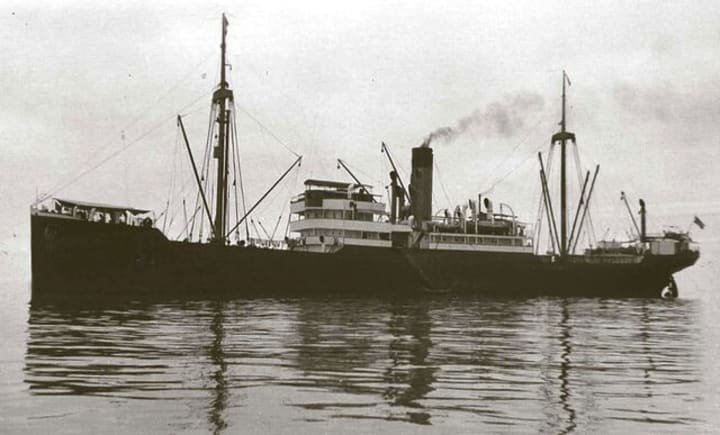
Thought to be on a voyage from Rio De Janeiro to Germany in 1939, this fabled Nazi ship is thought to have encountered a British naval vessel somewhere of the coast of Iceland.
The ship was said to have been carrying stolen gold that was bound for Berlin and the ships crew scuttled it to avoid it falling into the enemy's hands.
Several privately funded voyages have been made to try and find the location of the Minden and its reputed gold stash, with one finding a possible location of the wreck.
No gold or valuables have ever been discovered at the wreck site, which in 2017, had a detailed search carried out.
21 - Treasure of Lima

After the defeat of the Inca's, Spain had controlled their territory since the 16th century and the Roman Catholic church gathered a great treasure nicknamed the "treasure of Lima".
Peace did not last, and in 1820, the Viceroy of Lima decided to transport the city's fabulous wealth to Mexico for safekeeping after Lima found itself on the edge of revolt.
The treasure included two life-size solid gold statues of Mary holding the baby Jesus and various jeweled stones and candlesticks.
The loot was loaded onto a ship named Mary Dear, however it turns out its crew could not resist the temptation of the treasure and they turned pirate, stealing the treasure.
They buried it on Cocos Island, today part of modern day Costa Rica, and then decided to lay low.
Unfortunately, the crew of the ship was caught, tried and hanged, yet the captain and his first mate managed to convince the authorities to let them reveal the treasure.
Having traveled back to Cocos Island, they escaped into the jungle and were never seen again, along with the treasure.
Today treasure hunting is forbidden on the island, thanks to the Costa Rican government.
20 - Spartacus' Sword
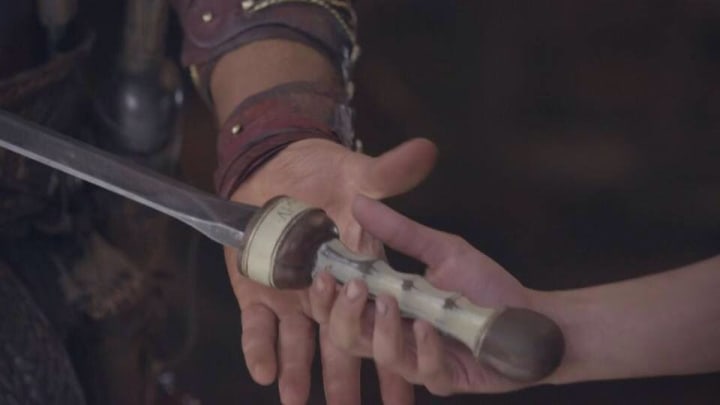
Possibly one of the most famous swords of the Roman era, The Sword used by legendary slave rebel Spartacus has long since been lost during the final battle of the Third Servile War.
Named the Gladius, his sword was rumored to be curved and was retrieved by Roman General Crassus after he was wounded in battle.
The fate of the sword from there is unknown, it was either left on the battlefield, retrieved by the rebels or eventually recovered by the Romans and returned to a roman city.
What the sword actually looked like remains a hot topic, with some claiming it was straight and others believing a curved sword a better fighting weapon.
Some people even believed Spartacus sometimes fought with both swords at once.
19 - Ring of Saint Edward
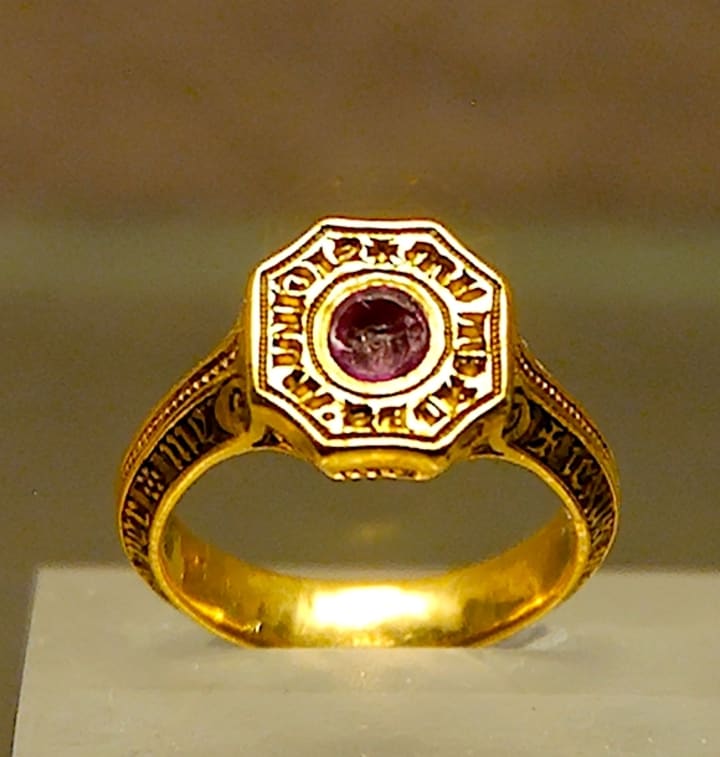
Born in 1005 as the son of King Ethelred the Unready, Edward ascended to the throne as a deeply religious leader.
He was reported to have given his ring a beggar that later ended up in the possession of St. John the Evangelist.
Passing the ring to two pilgrims, St. John told them to return the ring to Edward with a message that his life would end in just six months.
Next the ring made its way into the prized collection of Edward the Confessor and became extremely valuable after he was made a saint.
Kept at Westminster Abbey with other sacred relics, it disappeared after the dissolution of the monastery's in 1540
The blue sapphire once embedded within the ring, is said to be embedded in the cross atop the Imperial State Crown in today's Crown Jewel's.
18 - WW2 Gold Train

Another fascinating legend, that is also somewhat of a myth when it comes to treasure hunting, the Gold Train has been the focus of several major treasure hunts over the years.
Also the focus of several television treasure hunts, the train is said to be hidden somewhere in Southwest Poland, possibly close to the border of the Czech Republic.
Searches have involved the Polish Army, ground-penetrating radar, privately-funded digs and major excavations but no trace of the train has ever been found.
The train is said to be laden with 330 tons of stolen gold, various artworks, jewels, weapons and stolen valuables.
Many historians have stated that the train, nor the Nazi treasure, have ever been proven to have existed.
While no gold has ever been found, several paintings were hidden behind a plaster wall while doing renovation work in an old palace
17 - Izabela Czartoryska's Royal Casket

Created in 1800, this large wooden casket contained 73 precious relics and once belonged to Polish royalty.
Inscribed with the phrase, "Polish mementos assembled in 1800 by Izabela Czartoryska", the casket survived the Polish national uprisings and, for a time, resided in Kraków.
The casket was on the move during World War 2, and was hidden in a repository that was bricked up, with its location later revealed to the Wehrmacht soldiers by a family traitor.
The soldiers plundered the casket, which is unknown to have survived the raid and the loot was reportedly split among the battalion.
Several items within the casket included a gold watch of King Augustus II, a portrait of Queen Constance of Austria and the Ivory box in a silver gilded frame, once owned by King John III of Poland.
Rumors swirl to this day that the casket may have been on the fabled Nazi gold train that we covered previously.
16 - George Mallory's Camera

One of the enduring mystery's of the 20th century, was the disappearance of the camera that was owned by George Mallory when he attempted his Everest climb in 1924.
Said to be the most coveted camera in the history of modern exploration, the camera is now thought to be among the possessions of Andrew Irvine, Mallory's climbing partner, who remains missing.
When Mallory’s body was found in 1999, the camera was not with him, suggesting that it was now lying with Irvine somewhere on the peak.
To this day, the search for Irvine and the camera continue, but unfortunately, with the Tibetan side of Everest unreachable, the camera which may prove they reached the summit is yet to be found.
15 - Sceptre of Dagobert
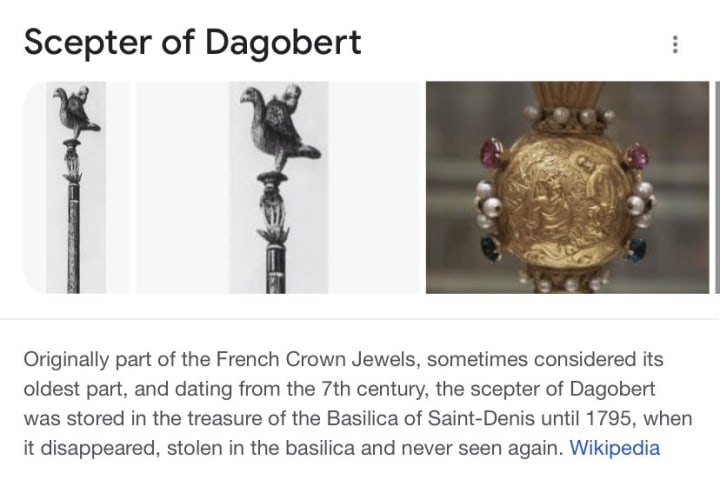
Considered to be one of the oldest parts of the crown jewels, the Sceptre of Dagobert dates from the 7th century and was stored in the treasure of the Basilica of Saint-Denis.
Disappearing in 1795 and never seen again, this famed part of the French Crown Jewels was made of filigraned and enameled gold and was was 56 cm long.
The scepter was made out of three parts, the rod, the hand holding the world and a statue at the top, being the oldest part.
The Scepter's name comes from Dagobert I, a French king for whom it was supposedly created and has not been seen since its disappearance.
14 - Twin Sisters Canon's

Used by Texas Military Forces during the Texas Revolution, these canons are said to be are among the most famous artillery in Texas military history.
Said to be responsible for winning the revolution at the Battle of San Jacinto, and were also thought to have been used during the Mexican Invasions of 1842 and American Civil War.
Fiercely debated among historians, archaeologists, and treasure hunters, the canons disappeared and were last seen on the 30th July 1865.
A range of theories have been put forward for the location of the canons including loss to quicksand and even being melted down for scrap.
13 - Nelson's Chelengk
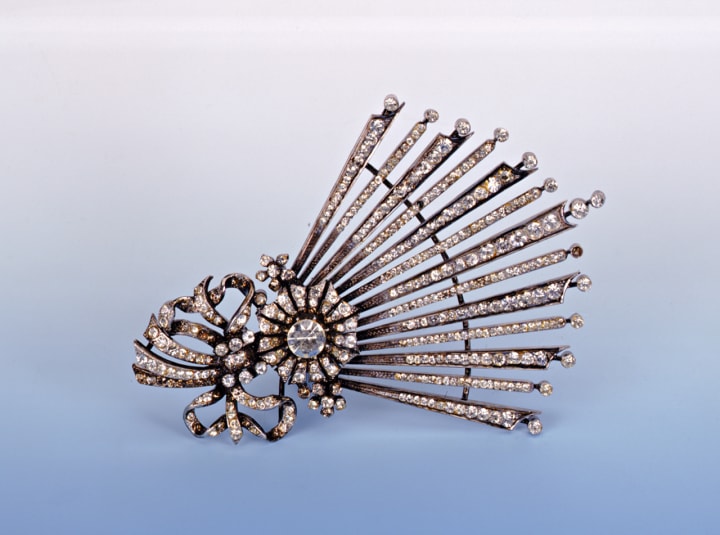
Specially-made for Horatio Nelson by Sultan Selim III in honour of the Battle of the Nile, it was the first time a piece of this stature was awarded to a non-Ottoman.
The piece was bought by the Society for Nautical Research in 1929 following a national appeal, but disappeared in a theft from the National Maritime Museum in 1951.
Several books have been written about the Chelengk and it remains one of the most famous lost seafaring treasures of all.
12 - Tucker's Cross

This emerald-studded, 22-karat gold cross discovered by Bermudian marine explorer Teddy Tucker in 1955, was originally believed to a Spanish galleon named The San Pedro, that wrecked in 1594.
He originally believed the cross to be made in India and in 1997, it was now thought to be the most valuable object ever found in a shipwreck.
Tucker sold it to the Government of Bermuda in 1959 for $100,000 and the piece was kept in the Aquarian Museum which he ran with his wife.
It was later discovered that the Cross had been stolen and a cheap plastic replica left in its place, during an impending visit by Queen Elizabeth II.
11 - Cleopatra's Tomb

If there is one item of treasure that has not yet been found in Egypt and Cleopatra's tomb tops the chart as one of the most sought after missing rooms ever.
Several sites have been explored in the search for the tomb, yet the most promising site, located on the Island of Antirhodos which now sits below the sea.
Several Cleopatra-style artifacts and a room that contains Isis temple related artifacts have been discovered on or near this island but the tomb itself remains a mystery.
10 - Great Bell of Dhammazedi

Believed to be the largest bell ever cast on 5 February 1484 by order of King Dhammazedi, the bell was said to have an unpleasant noise when rung.
The theft of the bell commenced in 1608 when a Portuguese warlord De Brito, removed the Bell from the Shwedagon Pagoda and rolled it down Singuttara Hill.
Hauled by elephants to the Bago River, it was loaded onto a barge that was attached to De Brito's ship.
Once on the move, the bell proved too heavy for the barge and the ship towing it and all went straight to the bottom of the river.
Many people have tried to find the bell, so far without success with one deep sea diver, James Blunt having made over 115 dives in an attempt to locate it, as yet, without success.
9 - Hiroshima Atomic Map

While several maps were created to plan the dropping of an Atomic Bomb on Hiroshima, one map in particular stands out, the only one to currently be missing.
Filed in the Twentieth Air Force Mission Reports, the map has all but disappeared from history.
8 - Pharaoh Menkaure's Tomb
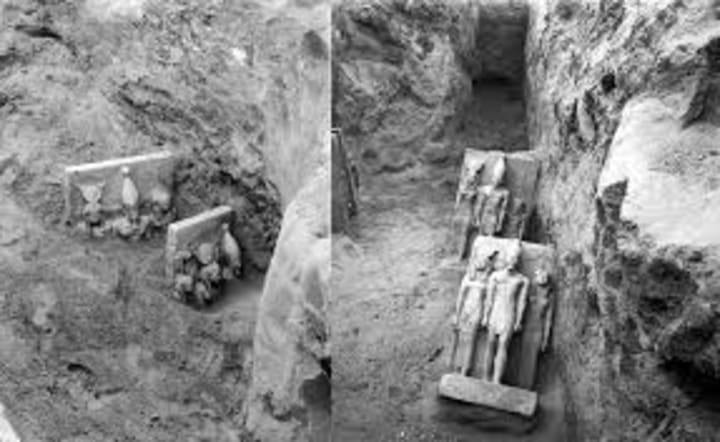
Discovered by Howard Vyse and John Perring in 1837, this large basalt sarcophagus was loaded onto a ship but was lost in a wreck on the way to Great Britain.
Luckily for Vyse and Perring, Menkaure's remains were found in a separate burial chamber in a wooden anthropoid coffin inscribed with his name.
Today, it resides safely in the British Museum, while the sarcophagus lies somewhere at the bottom of the Atlantic.
7 - Honjo Masamune Sword

Used by samurai warriors in battle and passed down through generations of Shogunate, this sword is the most important of all the missing Japanese swords.
Widely considered to be an invaluable cultural artifact, if the sword were to appear on the market today, it could potentially fetch a price in the range of tens of millions of dollars.
Today, the sword's whereabouts are unknown, leading to one of the greatest mysteries in Japanese history.
6 - Brunswick-Balke Collender Cup

Donated to the American Professional Football Association, the Brunswick-Balke Collender Cup was a silver trophy donated to the American Professional Football Association, later the NFL.
Only ever presented to one team, The Akron Pros, the trophy disappeared after a meeting of the APFA and NFL.
Even more strange is there is only one known visual depiction of the trophy in a picture that appeared in two newspapers from the era.
5 - Da Vinci’s Medusa

Being among Leonardo Da Vinci's earliest works, Leonardo represented the head of Medusa on a wooden shield after a request by his father.
The shield has been said to have inspire several early 17th-century painters and its rumored that two versions were actually painted, yet this is doubted by artists.
What's even more interesting is that any one of the surviving paintings could have been painted by Leonardo, we simply don't know which one.
4 - Blackbeard's Treasure
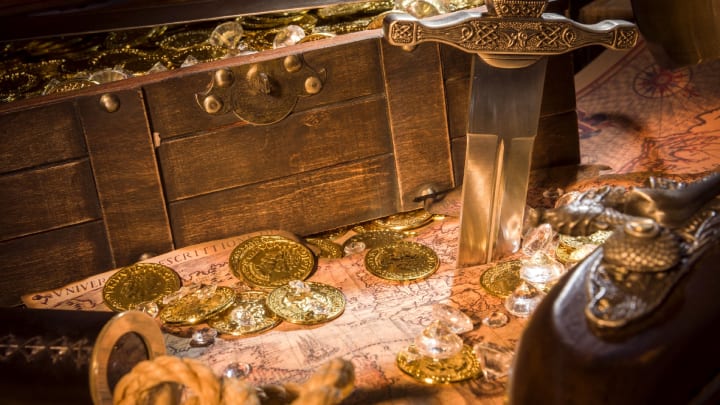
Real name Edward Teach, Blackbeard, as he became known, was one of the most feared pirates to ever sail.
Initially serving as a privateer during Queen Anne’s War, for all intensent purposes, Blackbeard was a pirate with papers, working for a government.
Loaded with 40-canons,his feared ship, the ‘Queen Anne’s Revenge’, conducted several audacious acts of piracy and cemented his reputation as one of the most fearsome marauders of his time.
Blackbeard met his end after falling in battle against Lieutenant Robert Maynard, leaving behind one of the world's largest hidden treasures possibly running into the hundreds of millions.
Nothing was found on his ships and no map was left leading to any X marks the spot, however some speculate that he buried the treasure on Ocracoke Island.
Others believe that he may have hidden it in one of the many caves that stretch along the coastline near the Beaufort Inlet where his ship was found wrecked.
With over 300 years passing since the tale of the treasure surfaced, nothing has yet been found.
3 - Yamashita’s Gold
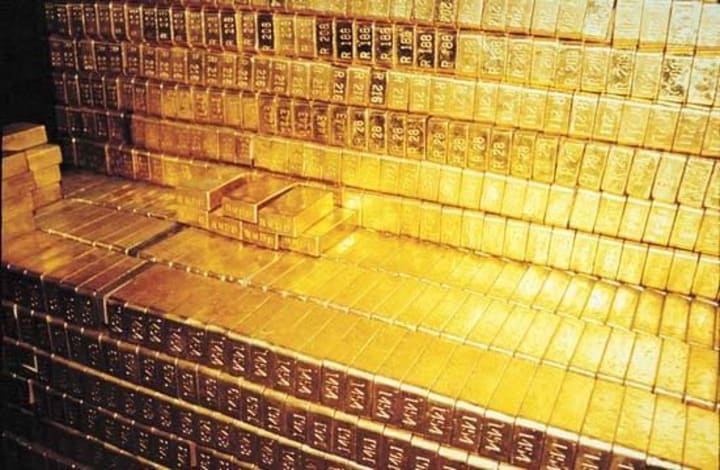
Often referred to as the Yamashita treasure, 6,000 tonnes of gold was said to have been buried in Southeast Asia by Imperial Japanese forces sometime during world war 2.
Rumors spread that gold bars had been found in the mountains about 40km away from Manila and several people were arrested for illegal treasure hinting.
Others have tried, and failed to locate the source of Yamashita’s Gold with some falling foul of supposed booby traps.
Others claim that American military intelligence operatives located much of the loot and sold it as "Black Gold" to finance American covert intelligence operations around the world.
Others have said it never existed at all
2 - Th e Lost Library of The Moscow Tsar's

Known as the "Golden Library" and thought to have been assembled by Grand Duke Ivan III of Russia, is thought to contain rare Greek, Latin, and Egyptian works from the libraries of Constantinople and Alexandria.
Initially thought to have been located under the Kremlin, treasure-hunters have often feared a well-known curse that is said to blind anyone coming too close to the books within.
Searches for the library have continued relentlessly since the early 19th century, and the closest anyone has ever come to finding its location was archaeologist Ignatius Stelletski in 1929.
1 - Genghis Khan's Grave

Having been the subject of much speculation and research, the burial site of Genghis Khan remains undiscovered and is believed to be near the Mongol sacred mountain of Burkhan Khaldun.
Two expeditions led by French archaeologist Pierre-Henri Giscard, a specialist in Mongolian archaeology, used drones to carry out non-invasive analysis of several sites.
Unfortunately, access to the area around Burkhan Khaldun remains strictly controlled by the Mongolian government due to the sacredness of the area.
The palace of Genghis Khan was discovered in 2004 and over 20 tombs for high-status individuals remain unopened around the foothills of the Hentii Mountains, yet again, public access is barred.
The great warrior’s tomb is speculated to contain a vast treasure from across the ancient Mongol Empire and the Mongolians have gone to great lengths to keep its location a secret.
Remember to subscribe to us on YouTube for more great content coming soon!
About the Creator
Vidello Productions
My name is William Jackson, a YouTube content creator and crypto enthusiast with over 142,000 subscribers and I make videos that are focused on the billionaire lifestyle and crime.
Content consists of top list videos.
Home North-East England
Enjoyed the story? Support the Creator.
Subscribe for free to receive all their stories in your feed. You could also pledge your support or give them a one-off tip, letting them know you appreciate their work.






Comments
There are no comments for this story
Be the first to respond and start the conversation.